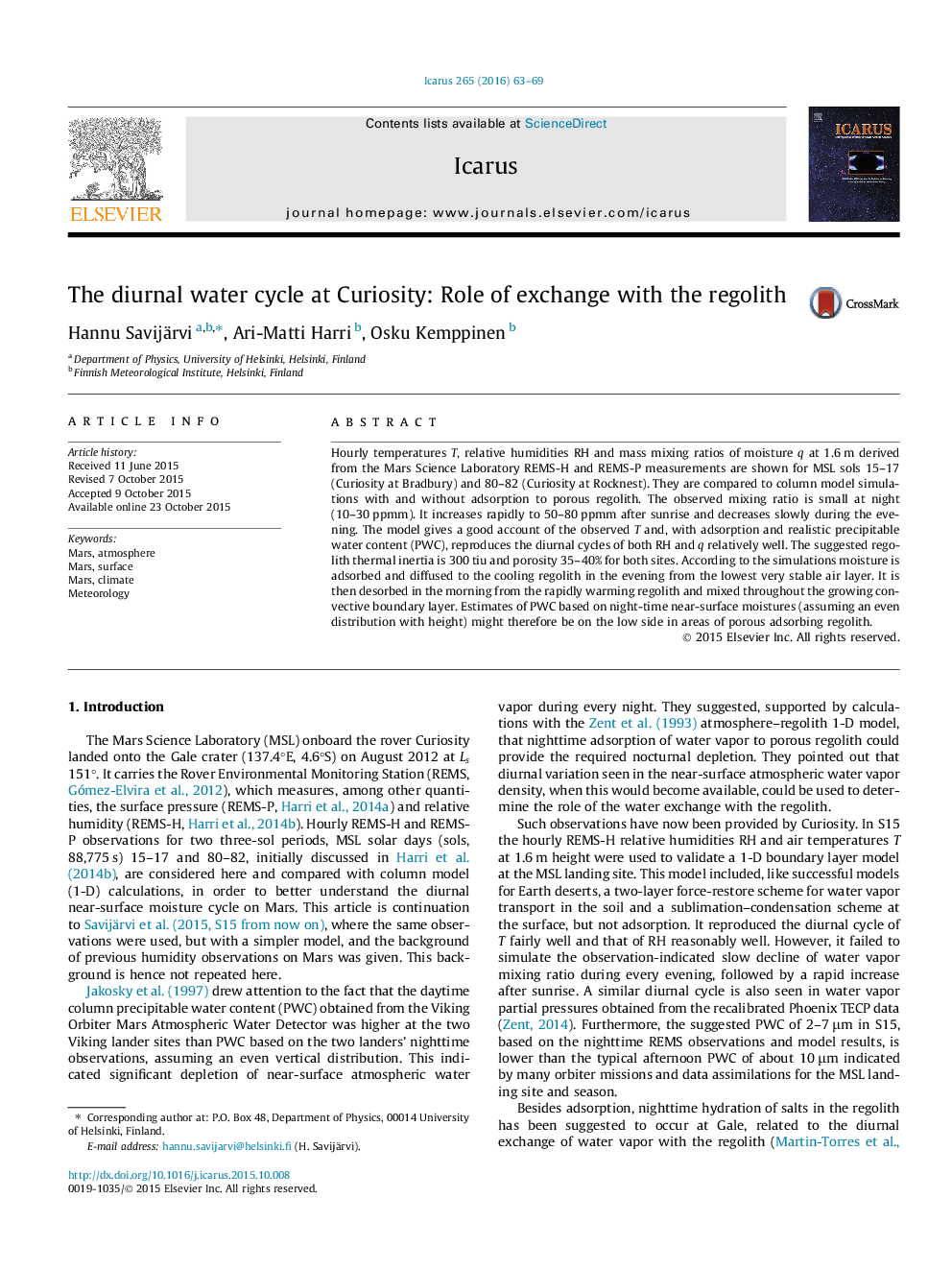| Article ID | Journal | Published Year | Pages | File Type |
|---|---|---|---|---|
| 8135777 | Icarus | 2016 | 7 Pages |
Abstract
Hourly temperatures T, relative humidities RH and mass mixing ratios of moisture q at 1.6Â m derived from the Mars Science Laboratory REMS-H and REMS-P measurements are shown for MSL sols 15-17 (Curiosity at Bradbury) and 80-82 (Curiosity at Rocknest). They are compared to column model simulations with and without adsorption to porous regolith. The observed mixing ratio is small at night (10-30Â ppmm). It increases rapidly to 50-80Â ppmm after sunrise and decreases slowly during the evening. The model gives a good account of the observed T and, with adsorption and realistic precipitable water content (PWC), reproduces the diurnal cycles of both RH and q relatively well. The suggested regolith thermal inertia is 300Â tiu and porosity 35-40% for both sites. According to the simulations moisture is adsorbed and diffused to the cooling regolith in the evening from the lowest very stable air layer. It is then desorbed in the morning from the rapidly warming regolith and mixed throughout the growing convective boundary layer. Estimates of PWC based on night-time near-surface moistures (assuming an even distribution with height) might therefore be on the low side in areas of porous adsorbing regolith.
Related Topics
Physical Sciences and Engineering
Earth and Planetary Sciences
Space and Planetary Science
Authors
Hannu Savijärvi, Ari-Matti Harri, Osku Kemppinen,
